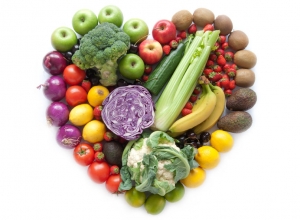Good vs. Bad Carbohydrates
Carbohydrates are an important part of your diet, but that doesn't mean you're free to load up on cakes and cookies to get your daily amount. Here, we explain the difference between good and bad carbohydrates.
By Diana Rodriguez
Medically Reviewed by Lindsey Marcellin, MD, MPH
Carbohydrates are an important part of a healthy diet, but there's much discussion about the good and bad carbohydrates.
So how do you know which is which? The answer is both simple — and complex.
Good vs. Bad Carbohydrates
Carbohydrates, often referred to as “carbs,” are your body's primary energy source, and they're a crucial part of any healthy diet. Carbs should never be avoided, but it is important to understand that not all carbs are alike.
Carbohydrates can be either simple (nicknamed "bad") or complex (nicknamed "good") based on their chemical makeup and what your body does with them.
Complex carbohydrates, like whole grains and legumes, contain longer chains of sugar molecules; these usually take more time for the body to break down and use. This, in turn, provides you with a more even amount of energy, according to Sandra Meyerowitz, MPH, RD, a nutritionist and owner of Nutrition Works in Louisville, Ky.
Simple carbohydrates are composed of simple-to-digest, basic sugars with little real value for your body. The higher in sugar and lower in fiber, the worse the carbohydrate is for you — remember those leading indicators when trying to figure out if a carbohydrate is good or bad.
Fruits and vegetables are actually simple carbohydrates — still composed of basic sugars, although they are drastically different from other foods in the category, like cookies and cakes. The fiber in fruits and vegetables changes the way that the body processes their sugars and slows down their digestion, making them a bit more like complex carbohydrates.
Simple carbohydrates to limit in your diet include:
Soda
Candy
Artificial syrups
Sugar
White rice, white bread, and white pasta
Potatoes (which are technically a complex carb, but act more like simple carbs in the body)
Pastries and desserts
Meyerowitz says that you can enjoy simple carbohydrates on occasion, you just don't want them to be your primary sources of carbs. And within the simple carb category, there are better choices — a baked potato, white rice, and regular pasta — than others — chips, cakes, pies, and cookies.
The Detail on Complex Carbohydrates
Complex carbohydrates are considered "good" because of the longer series of sugars that make them up and take the body more time to break down. They generally have a lower glycemic load, which means that you will get lower amounts of sugars released at a more consistent rate — instead of peaks and valleys —to keep you going throughout the day.
Picking complex carbohydrates over simple carbohydrates is a matter of making some simple substitutions when it comes to your meals. "Have brown rice instead of white rice, have whole-wheat pasta instead of plain white pasta," says Meyerowitz.
To know if a packaged food is made of simple or complex carbohydrates, look at the label. "Read the box so you know what exactly you're getting. If the first ingredient is whole-wheat flour or whole-oat flower, it's likely going to be a complex carbohydrate,” says Meyerowitz. "And if there's fiber there, it's probably more complex in nature."
The Glycemic Load Factor
Describing carbs as being either simple or complex is one way to classify them, but nutritionists and dietitians now use another concept to guide people in making decisions about the carbs they choose to eat.
The glycemic index of a food basically tells you how quickly and how high your blood sugar will rise after eating the carbohydrate contained in that food, as compared to eating pure sugar. Lower glycemic index foods are healthier for your body, and you will tend to feel full longer after eating them. Most, but not all, complex carbs fall into the low glycemic index category.
It is easy to find lists of food classified by their glycemic index. You can see the difference between the glycemic index of some simple and complex carbohydrates in these examples:
White rice, 64
Brown rice, 55
White spaghetti, 44
Whole wheat spaghetti, 37
Corn flakes, 81
100 percent bran (whole grain) cereal, 38
To take this approach one step farther, you want to look at the glycemic load of a food. The glycemic load takes into account not only its glycemic index, but also the amount of carbohydrate in the food. A food can contain carbs that have a high glycemic index, but if there is only a tiny amount of that carb in the food, it won’t really have much of an impact. An example of a food with a high glycemic index but a low glycemic load is watermelon, which of course tastes sweet, but is mostly water.
The bottom line: Just be sensible about the carbs you choose. Skip low-nutrient dessert, consider the levels of sugar and fiber in carbs, and focus on healthy whole grains, fruits, and veggies to get the energy your body needs every day.
Originally Published by:
http://www.everydayhealth.com/
By Diana Rodriguez
Medically Reviewed by Lindsey Marcellin, MD, MPH
In June we are spreading awareness for conserving the environment! In America, we often use many resources without thinking about the consequences. Although our country makes up less than 5 percent of the world population, we still consume over 30 percent of its resources. Also, 110 million Americans live with such high levels of air pollution that threaten their lives.
This is why it is so important that we spread awareness about the environment. Not only is the health of our planet in danger, but also our own health. Not many people are considering the impact that their actions are having on their planet and their neighbors.
This is why the Alpha Group will be hosting a Tree Planting event right here at Alpha Place! This is open to all clients, field employees, in-house employees, and the friends and families of everyone! Come join us with your shovels and garden gloves! We will be announcing the date later in the month.
There are so many things that you can change in your everyday life that will help save the environment. Even companies can make changes to their routines that are green. For a list of ways to go green and make an impact at your place of work, take a look at our list of ideas attached.
March Is…
National Nutrition Month
March is National Nutrition Month! This month we will be reviewing what food we put into our bodies and considering better and healthier options.
Americans typically exceed the recommended daily portions for calories from solid fats and added sugars, refined grains, sodium, and saturated fats and yet do not get enough of vegetables, fruits, whole-grains, dairy products, and oils.
During the month of March, let’s look at our diet and nutrition and see where we can improve. Studies have shown that keeping track of your eating throughout the day for extended periods of time can help people cut down on their eating. Many people have food journals or use Smartphone applications such as My Fitness Pal that keep track of eating, drinking, and exercise habits.
The Alpha Group will also be holding a month-long food drive in the lobby of Alpha Place. These donations will be benefiting the Hebron Food Pantry in Attleboro. Feel free to leave a donation of healthy non-perishable items in the box in the lobby. Also, feel free to donate directly to the Hebron Food Pantry at their location or online http://www.hebronfoodpantry.org/
May is nationally known as ALS Awareness Month! ALS stands for amyotrophic lateral sclerosis, which is a motor neuron disease that affects a person’s ability to walk, dress, speak, swallow, and eventually breathe. About 6,000 people in the United States are diagnosed with ALS every year, yet there is no known cause or cure.
ALS is also commonly known as Lou Gehrig’s disease, which refers to the Yankee’s first baseman who passed away from the disease in 1941 at just 37 years old. Although there have been significant advances in research and treatment, there is still much more to learn about ALS.
ALS Awareness Month seeks to spread awareness, and encourages donations to support research, assist with family services, and provide financial support to individuals with ALS.
The Alpha Group will be accepting donations to benefit the Massachusetts Chapter of the ALS Association, and will also be participating in the Boston Walk to Defeat ALS in October. We will be joining Team Ienello, led by our Accounting & Payroll Coordinator, Hayley, whose father lost his battle with ALS in 2014.
We will be providing additional information as the Walk approaches, and if you are interested in joining or donating to Team Ienello please visit the team page!
November is Diabetes Awareness Month! In 2012, 29.1 million Americans, almost 10% of the population, had diabetes. And still 1.4 million Americans are diagnosed every year. If the trend continues, 1 in every 3 Americans will have diabetes in their lifetime. The good news is, however, that many cases of diabetes are easy to prevent.
Smartphones Could Be a Boon to Heart Health Research
Smartphones might revolutionize cardiac research by giving instant, accurate insight into the physical activity of people using them, a new study finds.
"People check these devices [an average of] 46 times a day," noted study senior author Dr. Euan Ashley, an associate professor of cardiovascular medicine at Stanford University in Palo Alto, Calif.
"From a cardiovascular health standpoint, we can use that personal attachment to measure physical activity, heart rate and more," he said in a university news release.
In the study, Ashley's team enlisted subjects via a free iPhone app called MyHeart Counts.
The researchers enrolled more than 47,000 Americans across all 50 states, and were able to track data about the physical activity of nearly 5,000 participants who took a six-minute walking fitness test.
"The ultimate goals of the MyHeart Counts study are to provide real-world evidence of both the physical activity patterns most beneficial to people and the most effective behavioral motivation approaches to promote healthy activity," said study co-lead author Dr. Michael McConnell. He's a professor of cardiovascular medicine at Stanford.
Why is it beneficial to get numbers from a smartphone? Because people often overestimate how much they exercise when they are simply asked in a survey, the researchers said.
"Traditional research on physical activity and cardiovascular health has been based on people writing down what they remembered doing," McConnell said. "Mobile devices let us measure more directly people's activity patterns throughout the day."
The researchers found that people who were active throughout the day, and not just once for a fairly short session, were healthier on the cardiac front. And those who mostly exercised on the weekend and went to bed early tended to be healthier.
One heart specialist who reviewed the new study believes the smartphone initiative has merit.
"It helps health care providers and patients alike in monitoring physical activity, setting goals, and achieving desired results," said Dr. Satjit Bhusri, a cardiologist at Lenox Hill Hospital in New York City. "As a result, we have up-to-date information on our patients' progress and prevention of heart disease."
Dr. Stacey Rosen is vice president of Northwell Health's Katz Institute for Women's Health in New Hyde Park, N.Y. She believes that tracking people via a smartphone could greatly expand research opportunities.
Right now, she said, "there are challenges to large-scale research initiatives -- cost, staffing and recruitment and retention of subjects."
"Enhancing the ability of the almost ubiquitous smartphone, to help us better understand ways to modify behavior that impact positively on heart disease risk, is a major game-changer," Rosen said.
The study was published Dec. 14 in JAMA Cardiology. There's more on keeping your heart healthy at the American Heart Association.
SOURCES: Satjit Bhusri, M.D., cardiologist, Lenox Hill Hospital, New York City; Stacey Rosen, M.D., vice president, women's health, Northwell Health's Katz Institute for Women's Health, New Hyde Park, N.Y.; Stanford University, press release, Dec. 14, 2016; JAMA Cardiology, Dec. 14, 2016
Originally published by: consumer.healthday.com
The Mystery of Human Blood Types
The ABO blood group evolved at least 20 million years ago, but scientists still don't understand the purpose of blood types
To Keep the Weight Off, Keep Tracking Your Diet
NEW ORLEANS — Keeping track of the foods you eat is an important strategy for weight loss, but continuing to monitor what you eat is also important to prevent regaining that weight. Now, a new study finds that stopping food tracking is linked to regaining weight.
In order to prevent re-gaining weight, people should make an effort four months after starting a diet to refocus on food tracking, according to the study, presented here Sunday (Nov. 13) at the American Heart Association's annual meeting called the Scientific Sessions.
The researchers found that people tended to stop dietary monitoring after about four months, and that this was followed by regaining weight, said Qianheng Ma, a public health researcher at the University of Pittsburgh and the lead author of the study.
The effects of food tracking, or "dietary self-monitoring," on weight loss have been well-studied, and the technique is a key component of what researchers call the "standard behavioral treatment" for people who want to lose weight and keep it off, Ma told Live Science. This type of treatment is the most effective non-medical approach to weight loss, according to the study.
In the study, the researchers looked at data from 137 people who had participated in a one-year weight loss intervention called EMPOWER. The majority of the people in the study were white women. The participants were, on average, 51 years old and had a BMI of 34.1. (People with a BMI of 30 or higher are generally considered obese.) The people in the study were asked to weigh themselves regularly with a digital scale that uploaded data in real time and to monitor their diet using a smartphone app.
Although everyone in the study initially lost weight, nearly three-quarters of the people in the study ultimately regained some of that weight. In addition, 62 percent of the participants stopped tracking what they were eating at some point during the study.
The researchers found that a greater percentage of the people who regained weight had stopped tracking what they ate, compared with those who were able to maintain their weight.
The average time that people tracked their diet before they stopped was 126 days — in other words, they were about four months into their diet when they stopped, Ma told Live Science. It's unclear why food tracking stopped at this point, she added.
People did not begin gaining weight immediately after they stopped tracking what they ate, the researchers noted. Rather, people started to gain weight, on average, about two months after they stopped tracking their food, the study found.
Now that the researchers have identified the point at which people tend to stop tracking their food, they intend to study whether strategically reminding people to keep tracking will help them to keep the weight off, Ma said.
The new findings have not been published in a peer-reviewed journal.
Originally published on Live Science.
http://www.livescience.com/56852-dietary-self-monitoring-weight-maintenance.html
Why Fruits and Vegetables Are Vital
Eating a diet rich in fruits and vegetables is important for good health. Find out why experts say Mother Nature's bounty packs better nutrients than supplements.
If we are what we eat, then many of us must be tripping all over the place due to a lack of balance. That's because the average American eats about three servings of fruits and vegetables per day — a stark contrast to the Department of Health and Human Services (HHS) and the U.S. Department of Agriculture's (USDA) new guidelines stating that we should be eating 5 to 13 servings of nature's best, depending on the number of calories you need.
So if we want to grow to be strong like Popeye, why can't we just down some supplements instead of devouring a pile of spinach?
Nutrients in fresh fruits and vegetables work together. Kristine Wallerius Cuthrell, MPH, RD, a research nutritionist and senior project coordinator for Hawaii Foods at the Center on the Family at University of Hawaii at Manoa, says that in the past five to 10 years, many large research studies have found that vitamin supplements don't provide the benefits that foods do. The 2005 Dietary Guidelines for Americans, created jointly between HHS and USDA and reviewed every five years, say that foods are the best sources of nutrients because they contain naturally occurring ingredients, like carotenoids and flavonoids.
"In addition to the substances we are aware of, there are many present in fruits and vegetables that have yet to be discovered. Food and the nutrients they contain aren't consumed singly, but with each other. As such, they may act in synergistic ways to promote health," Cuthrell says. For instance, eating iron-rich plants, like spinach, with an iron-absorbing enhancer, like the vitamin C in orange juice, is great for people who don’t get enough iron (typically young women).
Fruits and vegetables may prevent many illnesses. Eating fruits and vegetables may reduce your risk of cardiovascular diseases, stroke, type 2 diabetes, and even some forms of cancer. The Nurses' Health Study and Health Professionals Follow-up Study examined nearly 110,000 people over the course of 14 years. Part of the study revealed that the more fruits and vegetables people ate daily, the less chance they would develop cardiovascular diseases.
The relationship between fruits and vegetables and cancer prevention has been more difficult to prove. However, recent studies show that some types of produce are associated with lower rates of some types of cancer. For example, the World Cancer Research Fund and the American Institute for Cancer Research suggest that mouth, stomach, and colorectal cancers are less likely with high intakes of non-starchy foods like leafy greens, broccoli, and cabbage. Though studies have been mixed, lycopene, a carotenoid that gives tomatoes their red color, may help stave off prostate cancer.
Fruits and vegetables are great for watching your weight. They’re low in fat and calories, and loaded with fiber and water, which create a feeling of fullness. This is particularly helpful for dieters who want more filling calories. Plus, that fiber helps keep you “regular.”
Fruits and Vegetables: Get Your Fill
When adding fruits and vegetables to your diet, remember that variety is the spice of life. It's important to eat produce of various colors because each fruit or vegetable offers a different nutrient — think of it as nutritional cross-training. Trying new foods can be exciting, and be sure to sample every color in the produce rainbow.
The right number of servings of fruits and vegetables for you all depends on your daily caloric intake needs. A good way to find out how many servings you should be eating is by using the CDC's online serving calculator. Or make things even simpler by eating a fruit or vegetable at every meal and snack.
Don't let season, accessibility, or cost affect your fruit- and vegetable-friendly diet. If finding fresh produce is difficult, choose frozen, canned (low-sodium), or dried varieties. Also, 100 percent juice counts toward your servings, though it doesn't offer the full fiber of whole fruit.
The power of prevention may lie in a salad bowl or a plate of fruit. When we take advantage of produce, our bodies return the favor by reducing our risk of developing various illnesses.
Originally Published by: Everydayhealth.com By Melanie Winderlich Medically Reviewed by Pat F. Bass, III, MD, MPH
http://www.everydayhealth.com/diet-nutrition/101/nutrition-basics/fruits-and-vegetables.aspx








